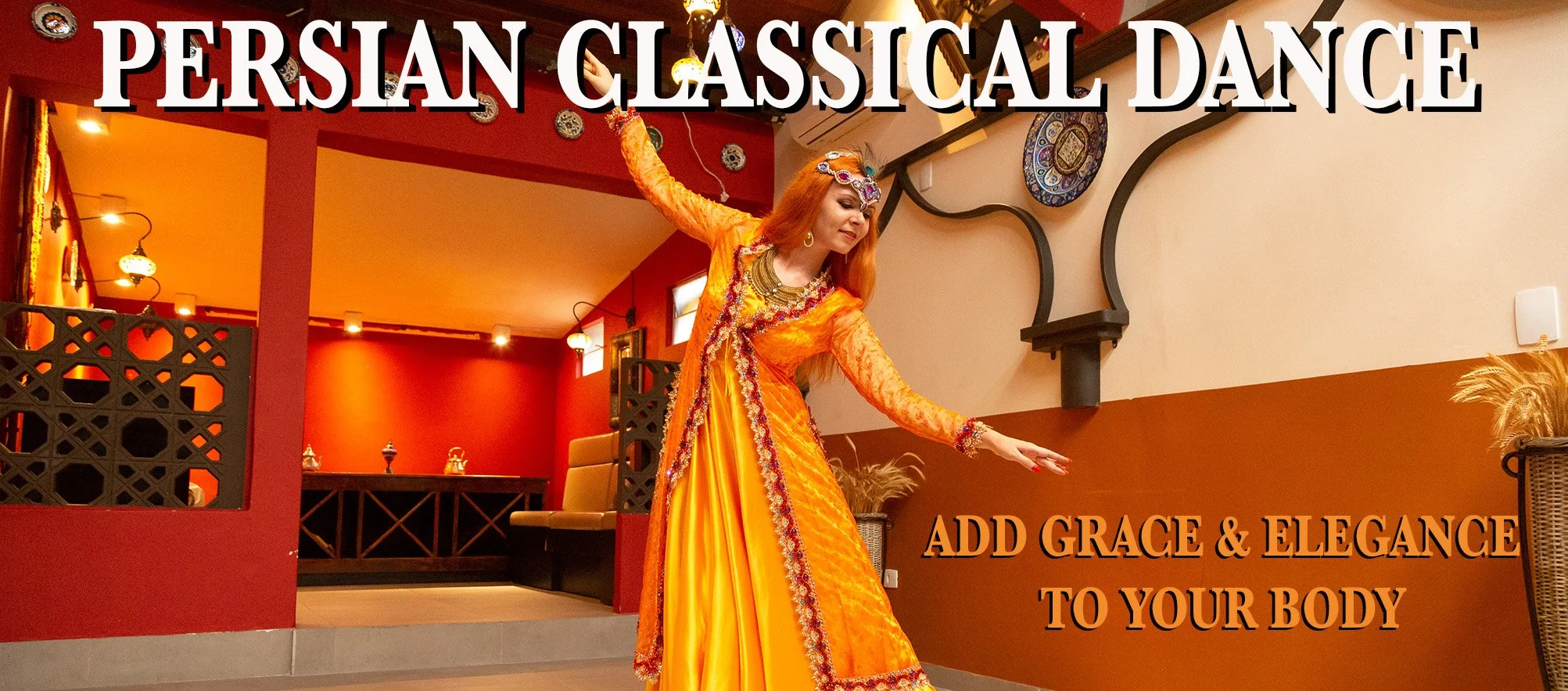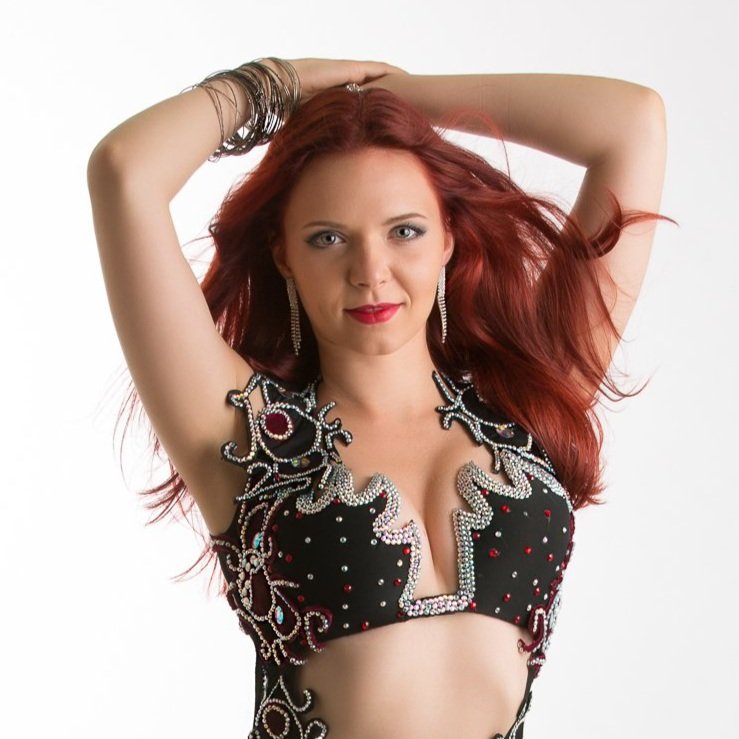Oriental Ballet Schéhérazade
Today Scheherazade is such a common title for various belly dance productions, as well as popular stage name among dancers. But have you heard about the revolutionary early 20th-centure ballet called Schéhérazade? And does it have anything to do with belly dance or the Middle East at all?
The ballet Schéhérazade was choreographed in 1910 by Michel Fokine for the Ballets Russes de Serge Diaghilev. The idea was borrowed from the first chapter of the One Thousand and One Nights. In the tale, Shah Shahryar returns from hunting to find his favourite wife Zobeida betraying him with a lover. According to the Schéhérazade plot, Shah Shahryar was the ruler of India and his brother was the king of China. However, most of the episodes in One Thousand and One Nights take place in Baghdad. Such a mixture of different cultures in one ballet without a clear definition of place represents a very common trend for that time of Western fantasies about the mysterious East.
The central topic of the ballet Schéhérazade is the question of sexual desire and satisfaction. Harems full of sultan's wives, concubines and female slaves always captured the imagination of Westerners. Starting from the 18th century any book that had the word "harem" in its title became a bestseller. The myth about odalisques in addition to the idea of a polygamous lifestyle inspired the Western imagination greatly, and evolved into a profitable business.
On top of that, 1910 was the peak of the so called 'Salomemania' period in the West: Mata Hari, Maud Allan, Collete Willy, Ruth St. Denis, and hundreds of other less famous dancers were presenting their versions of belly dance, sometimes referred as Dance of Seven Veils, often having remotely anything in common with the traditional culture of the Middle East.
So what is so special about the ballet Schéhérazade?
In his memoirs, Michel Fokine mentioned that Schéhérazade became the first ballet where he fully embodied all his ideas and dreams about what a ballet should be like. All gestures were familiar and easy to understand by any member of the audience, so traditional ballet pantomimes were not necessary any more. The story was clearly developed and projected through the gestured movements. Also, for the first time in ballet history, it was a continuous story on stage, not just a collection of separate dances under one theme. If before performers stopped after each dance to bow to the audience, Fokin strictly forbid to interrupt the flow of story till the very end. He recalls a funny occasion when dancers attempted not to follow his order, and he had to run on stage to stop their bow right in the middle of the spectacle, and then figure out on spot how to incorporate his running into the ballet scene.
But what about movements? Any signs of belly dance?
First of all, Fokine's dancers were barefoot, as well as belly dancers or Salome dancers of that time. It may seam of not much importance now, but back in those times it was unthinkable and revolutionary for traditional ballet dancers to perform barefoot.
Most of the poses in Schéhérazade involved criss-crossed legs rather than a turn-out ballet style. There was no second position of the legs throughout the entire ballet, as Fokine believed that there was "nothing uglier than the placed aside legs". Also, it was a clear stylization according to the place, time and epoch of its narrative. Can you imagine “harem” dancers with a traditional ballet positions all the time?
Fokine also added some hip movements to his harem choreography. This new influence was extremely unusual for ballets of that time. However, it was a small stylistic addition to his creation, far from the central role that hip movements have in traditional belly dance.
When hip movements were not the main focus in the Schéhérazade’s vocabulary, the arms were emphasized and used a lot. The serpentine and bizarre arm movements were associated in the Western minds with mysterious harem dance. However, they were not popular in actual belly dance until 1920th. Before that belly dancers used their arms mostly to frame the hip work, but not for independent intricate movements on their own. The use of arm gestures in Schéhérazade was a great example of cultural representation influenced by Orientalism, and how Western audience imaged the Middle Eastern dance.
Even before Schéhérazade, Fokine often tended towards the spectacle and exoticism in his ballets. At the premier performance of The Egyptian Nights (1909) he asked ballerina Pavlova to dance with a live snake. In Eunice (1907) he staged a dance between eight sharp swords for dancer Kschessinskaya, and a duet dance for male slaves balanced on wine-barrels. Concerning his Oriental ballets, as Fokine acknowledges in his memoirs, he never intended to represent the authentic dances of the Orient. His dances were inspired only by images from books and paintings, without having any training in traditional Middle Eastern dances. He was choreographing an imagined Orient.
Today there are many discussions among belly dancers on how Western dance influences traditional belly dance. However, I believe this influence goes in both directions. Schéhérazade is one small example of massive changes in the Western dance scene starting in the early 20th century, which were inspired by exploration of Oriental themes. Those influences shaped and revolutionized the development of what we see today in modern ballet and contemporary dance, as well as greatly increased the interest of Western dancers in studying the actual dance traditions of the Near East.
A couple of interesting reads for you ☺
Beaumont, Cyril W. Michel Fokine and His Ballets. London : Dance Books, 1996.
Bentley, Toni. Sisters of Salome. New Haven: Yale University Press, 2002.
Carlton, Donna. Looking for Little Egypt. Bloomington, Ind.: IDD Books, 1994.
Fokine, Michel. Memoirs of a Ballet Master. Toronto: Little, Brown, 1961.
Lewis, Reina. Rethinking orientalism: women, travel, and the Ottoman harem. New Brunswick, N.J.: Rutgers University Press, 2004.
Said, Edward W. Orientalism. New York: Vintage Books, 1979
Severn, Merlyn. Ballet in action. London: J. Lane, the Brodley Head, 1947.
If you enjoyed this article, don’t forget to like and share! :)
Author: Iana Komarnytska
Photographer: Pedro Bonatto
YOU MAY ALSO LIKE:
LISTEN TO THE BELLY DANCE LIFE PODCAST:
About Iana
Iana Komarnytska is a professional dancer, teacher, choreographer, and passionate content creator helping dancers navigate their dance lives.
She is a graduate from the professional dance program at York University (Canada), host of the Belly Dance Life podcast, creator of the Iana Dance Club, author of numerous articles, and winner of Star Bellydancer Canada 2014 among other international competitions.
Along with belly dance, Iana performs and teaches Persian Classical and Turkish Romani dancing. She is the first choreographer to start using Triple Isis wings, and since 2012 this is one of her style signatures.










A collection of translated stories and poems from ‘The Book of Songs’ by al-Isfahani, written in the 10th century.